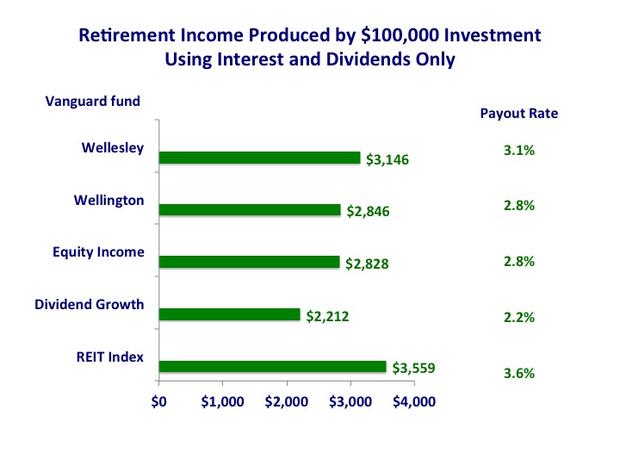Retirement income scorecard: Interest and dividends
(MoneyWatch) How much retirement income can you generate from your 401(k), IRA or other retirement savings? It's a critical question because it will affect just how much money you'll have to spend for the rest of your life.
The answer can vary widely depending on a number of factors, the most important being the retirement income generator that you use (In my latest book, "Money for Life," I call these RIGs for short.) Your age, sex and marital status also have a significant influence. And your income will depend on a number of economic factors, such as interest rates, dividend payout rates and annuity purchase rates in effect at the time you retire.
To help you answer the vital question above, here's the first installment for 2013 of my quarterly retirement paycheck scorecard series. It shows you the amount of retirement income that can be generated from $100,000 in retirement savings as of the beginning of January for each of the three RIGs I summarized in my recent post, "3 ways to turn your IRA and 401(k) into a lifetime retirement paycheck." You may want to review that post for background and to familiarize yourself with the advantages and disadvantages of each method.
Retirement income generator #1: Interest and dividends only
One way to generate retirement income is to invest in a mutual fund that pays a regular dividend and then use just the interest and dividend payments to cover your living expenses. Because you aren't dipping into your principal, there's a very good chance you won't outlive your money. This method also offers the maximum flexibility and access to your retirement savings. The downside is this method produces the lowest amount of retirement income, as you'll see from this scorecard.
- 3 ways to turn your IRA and 401(k) into a lifetime retirement paycheck
- Your most critical retirement planning challenge
- How to avoid going broke in retirement
Here are the estimates of annual dividends paid from various Vanguard mutual funds that have regular dividend payouts and low investment management expenses, a very desirable goal with mutual funds. I've also included the payout rate -- the annual income as a percentage of the investment -- for the purposes of comparing it to other methods of generating retirement income.

How has the chart changed since the previous quarter?
Compared to last quarter, the payout rates have increased slightly for all the funds except the Wellesley fund. That is because of the net result of small increases in stock dividends, reductions in interest income due to declining interest rates and small changes in the underlying fund values.
Note that these funds have different asset allocations between equity and fixed income investments, which is one important reason for the differences in income. Roughly 37 of the Wellesley fund is invested in stocks, with the remainder in fixed income or cash. The Wellington fund is invested roughly 65 percent in stocks, with the remainder in fixed income or cash. The Dividend Growth and Equity Income funds are invested nearly 100 percent in stocks, while the REIT index fund is invested nearly 100 percent in real estate investments.
All but the Dividend Growth fund pay dividends quarterly, while the Dividend Growth fund pays dividends semi-annually. The above amounts assume the payout rates for the past 12 months will continue for the next 12 months. Your actual income will change to the extent that future dividend payments are increased or decreased from the past 12 months.
Finally, please note that the amounts shown above are pre-tax income amounts. Federal and state income taxes will have a significant effect on your after-tax income and should be taken into account. The income taxes you pay will vary depending on whether your retirement savings have been invested before taxes in traditional IRA or 401(k) accounts; have been invested after taxes, such as in a Roth IRA; or are eligible for special tax treatment on capital gains, ordinary dividends or municipal bonds.
Stay tuned for my next post that shows the retirement income scorecard for RIG #2, systematic withdrawals.
Steve Vernon
View all articles by Steve Vernon on CBS MoneyWatch»
Steve Vernon helped large employers design and manage their retirement programs for more than 35 years as a consulting actuary. Now he's a research scholar for the Stanford Center on Longevity, where he helps collect, direct and disseminate research that will improve the financial security of seniors. He's also president of Rest-of-Life Communications, delivers retirement planning workshops
and authored Retirement Game-Changers: Strategies for a Healthy, Financially Secure and Fulfilling Long Life and Money for Life: Turn Your IRA and 401(k) Into a Lifetime Retirement Paycheck.
Disclaimer: The copyright of this article belongs to the original author. Reposting this article is solely for the purpose of information dissemination and does not constitute any investment advice. If there is any infringement, please contact us immediately. We will make corrections or deletions as necessary. Thank you.







